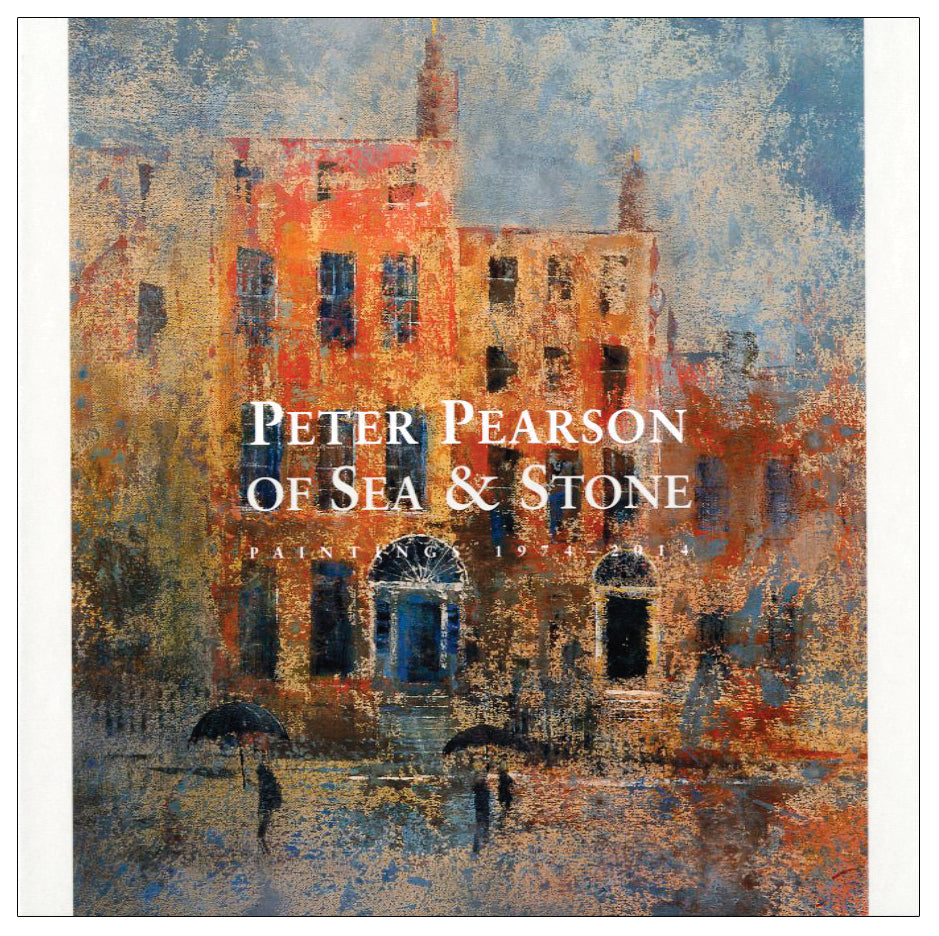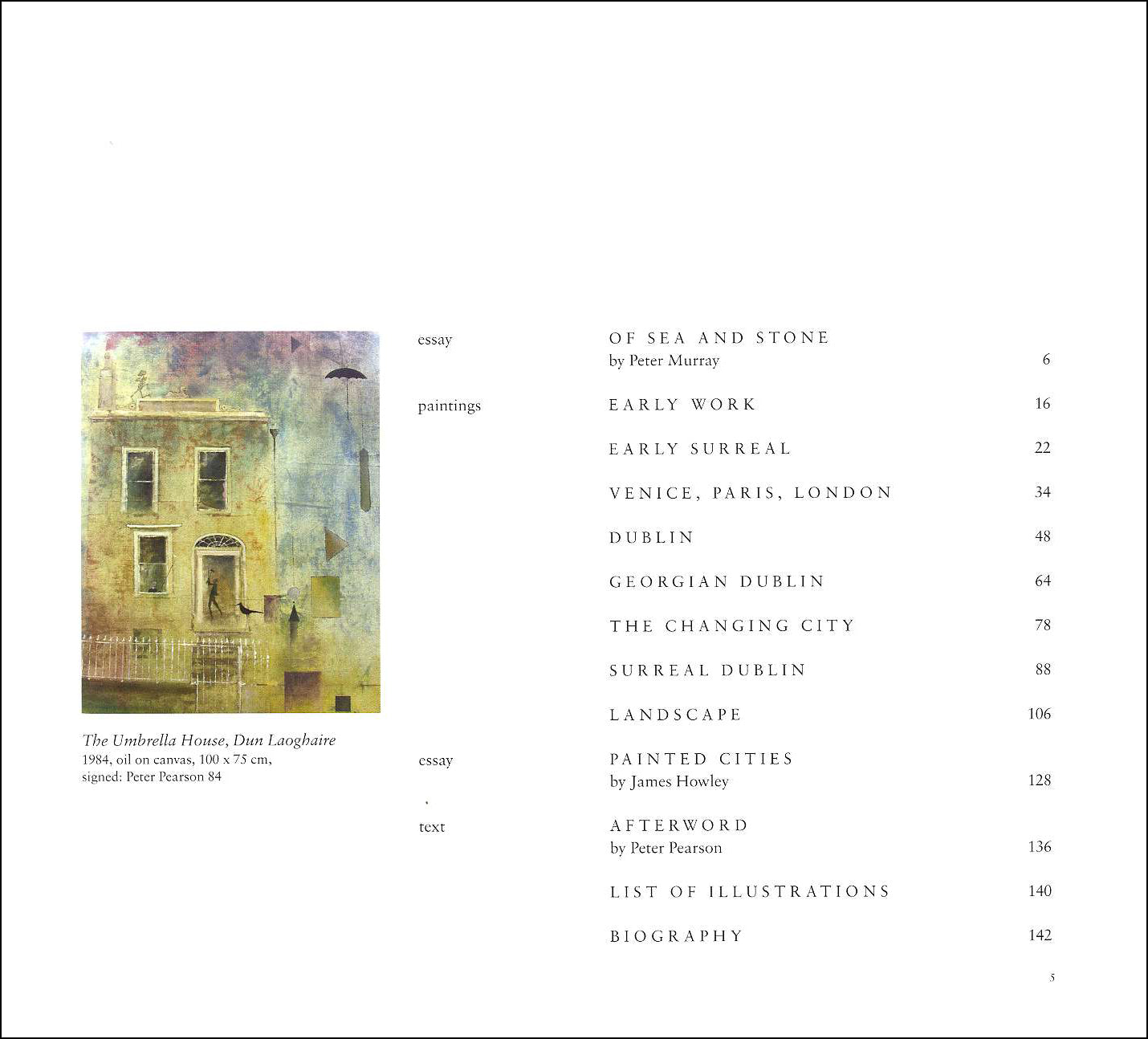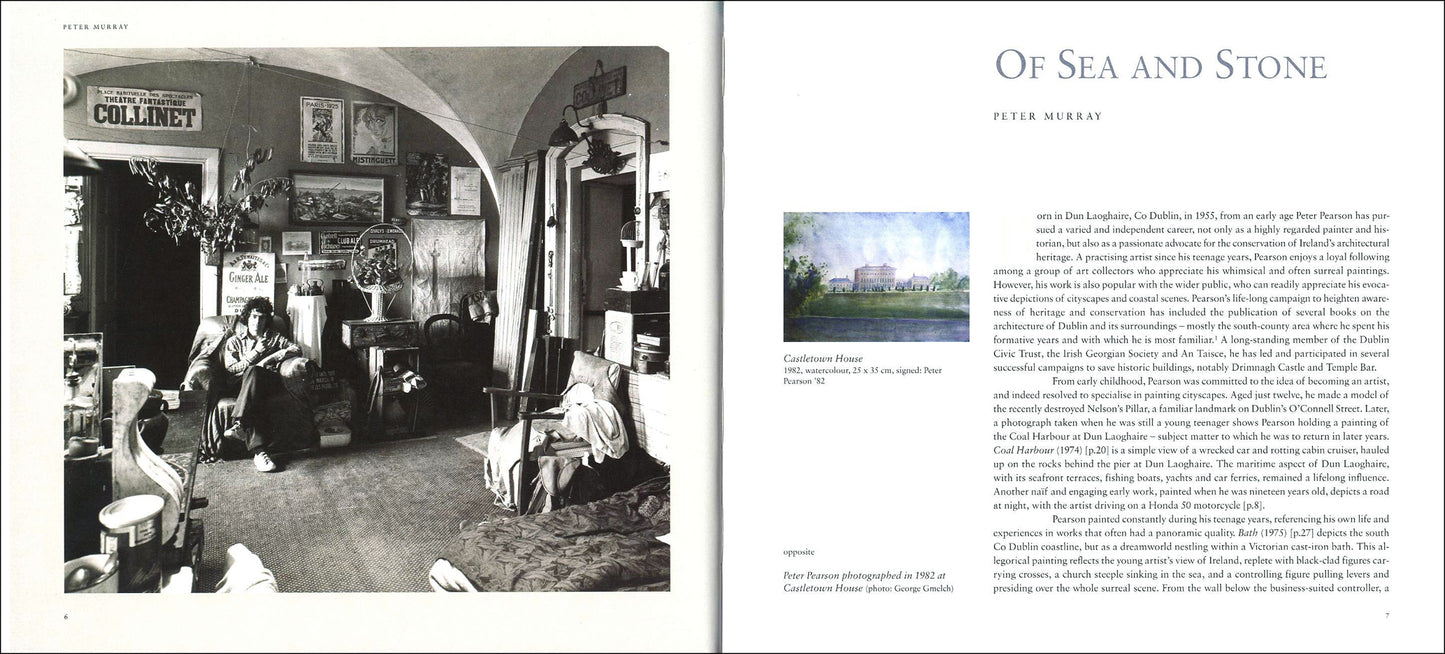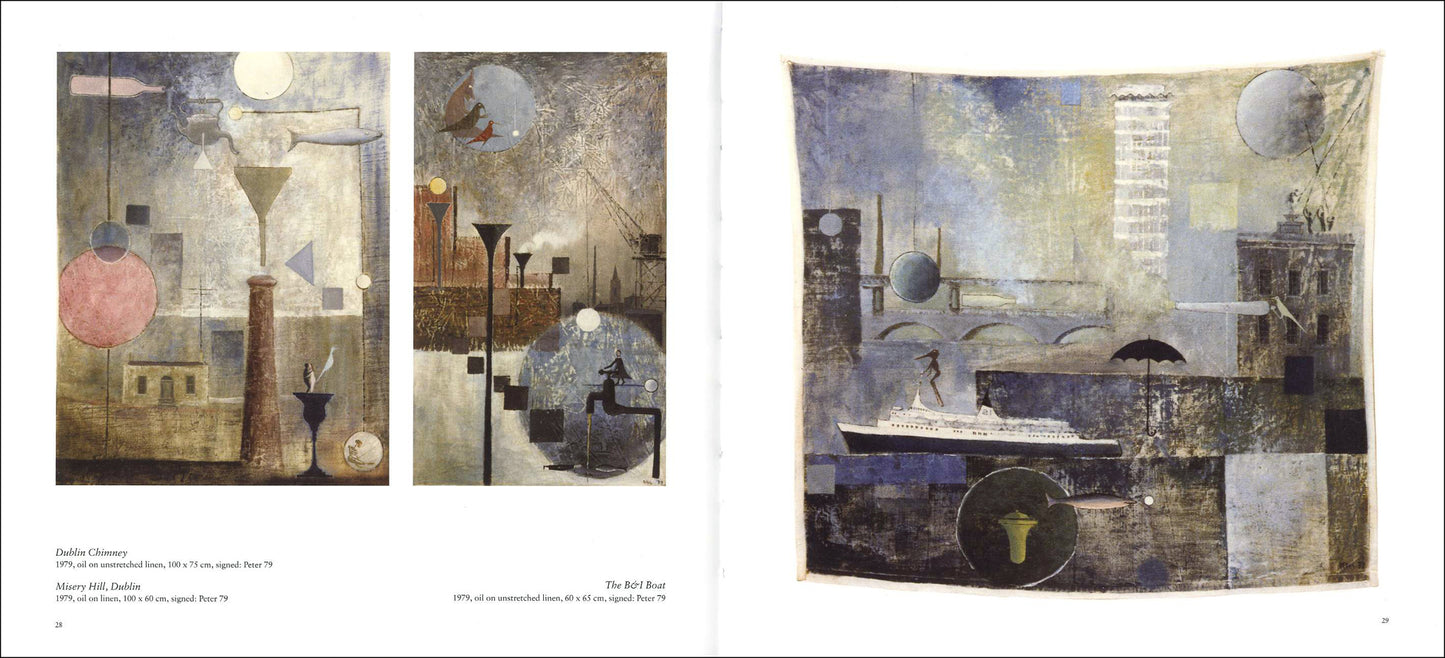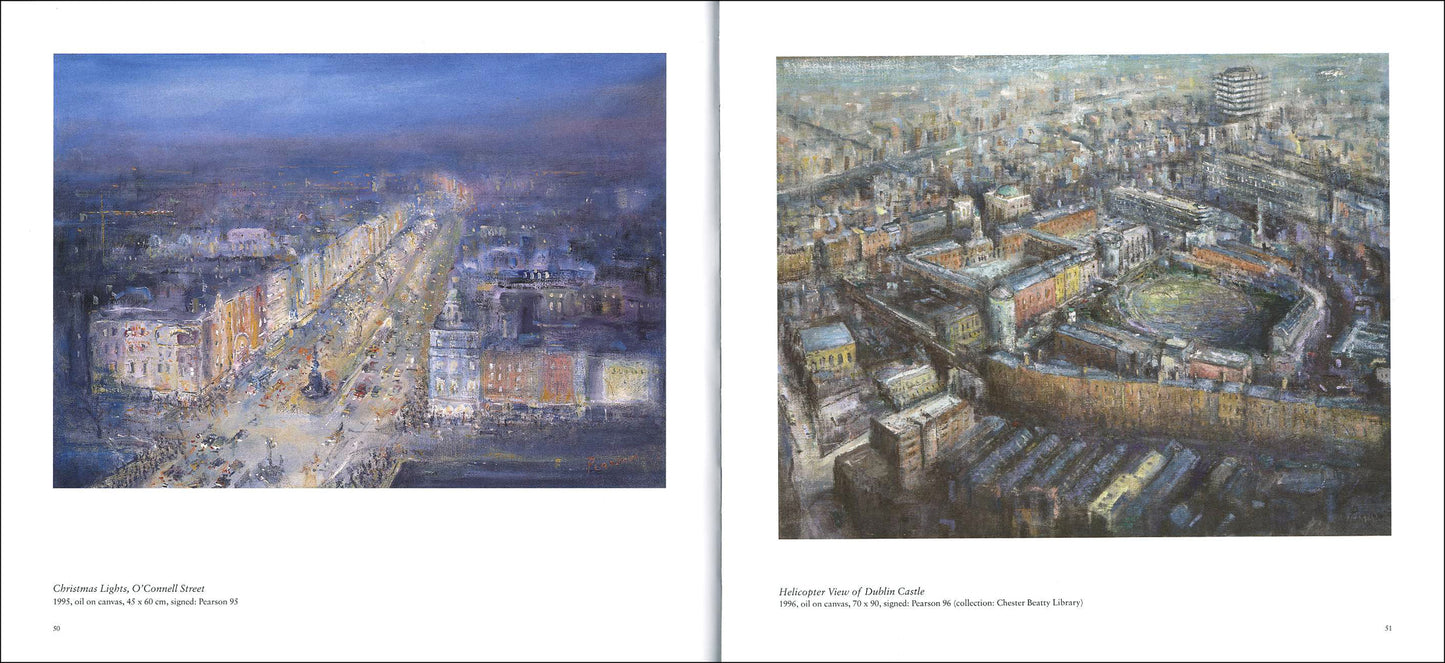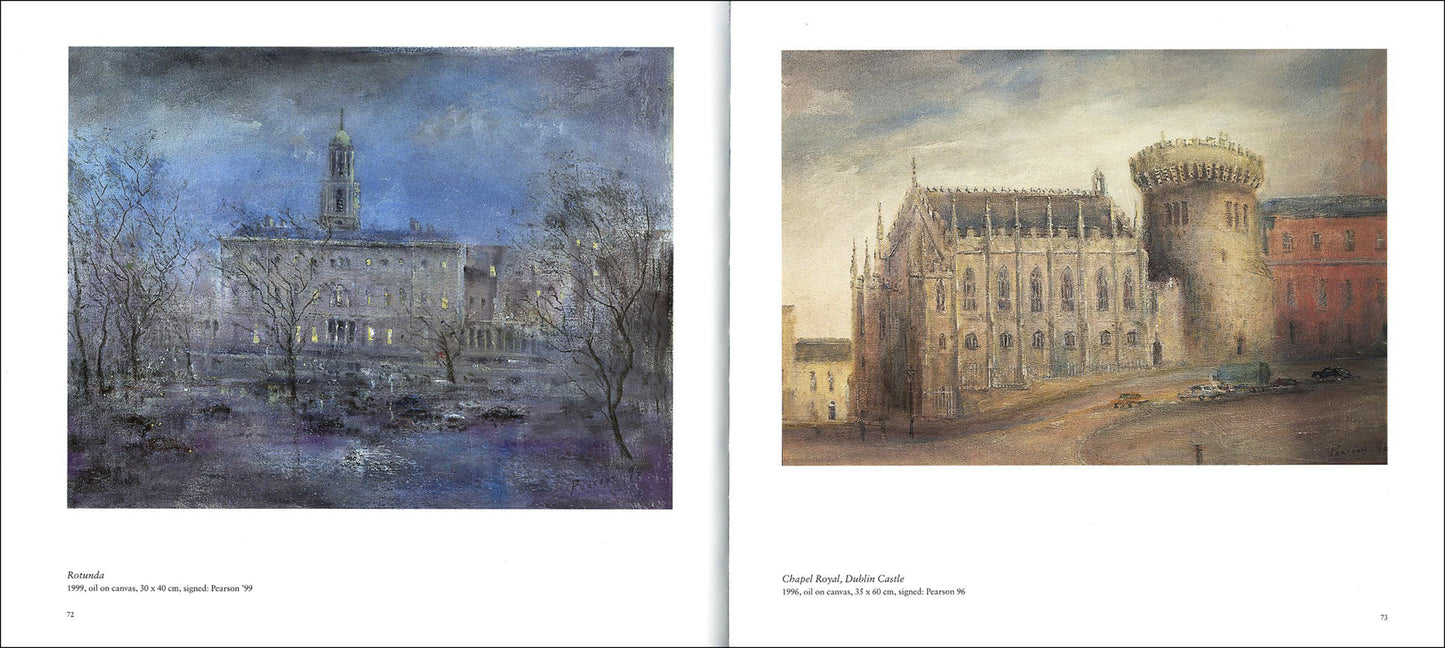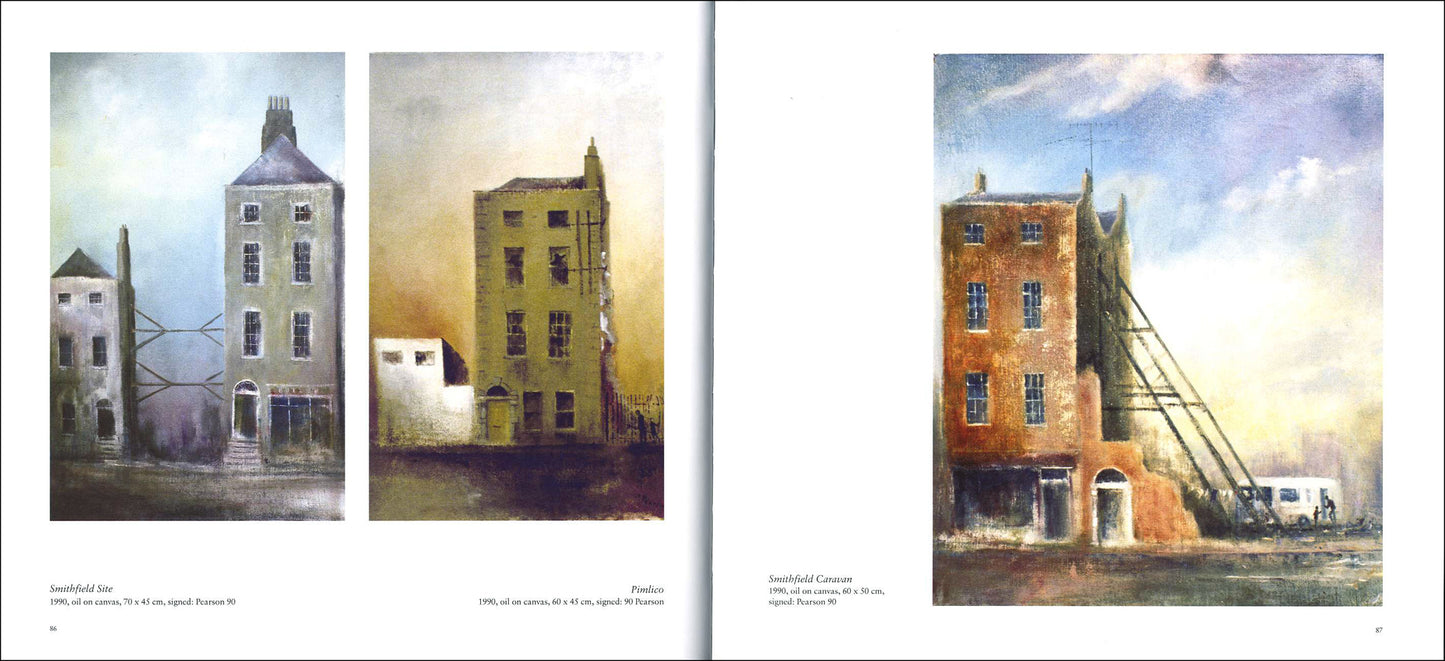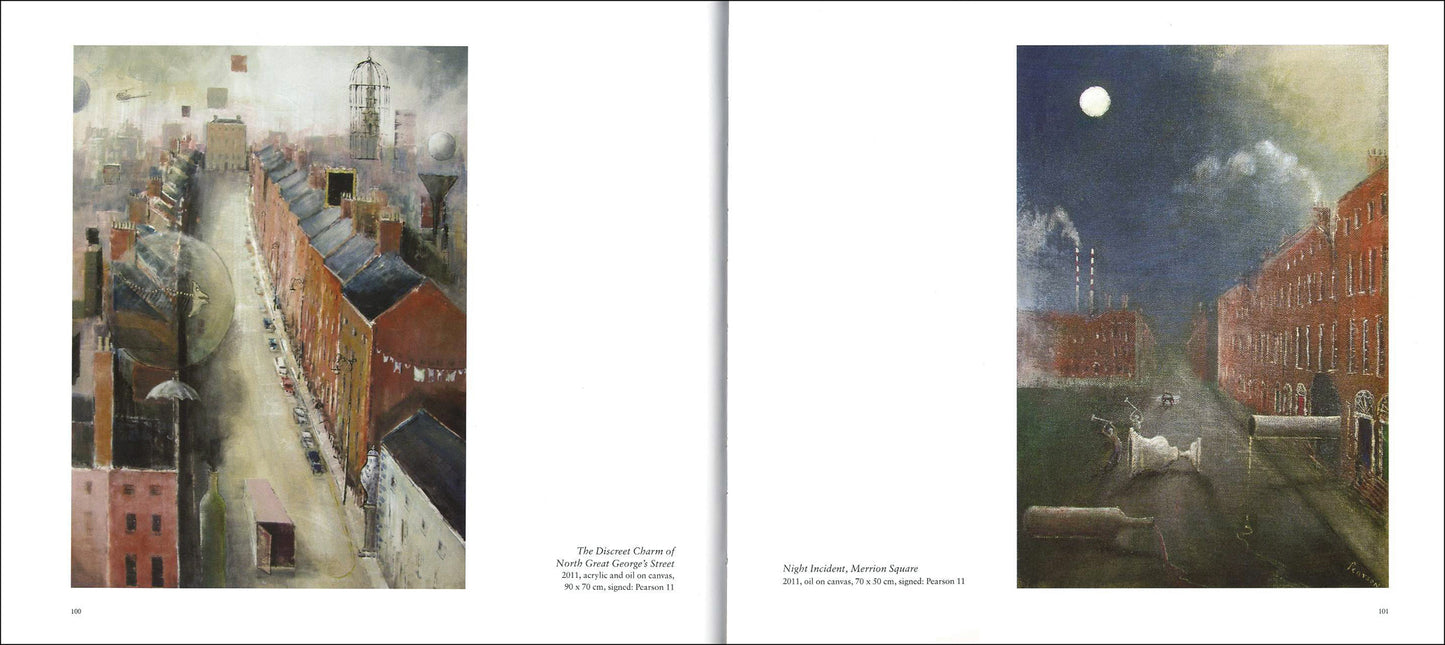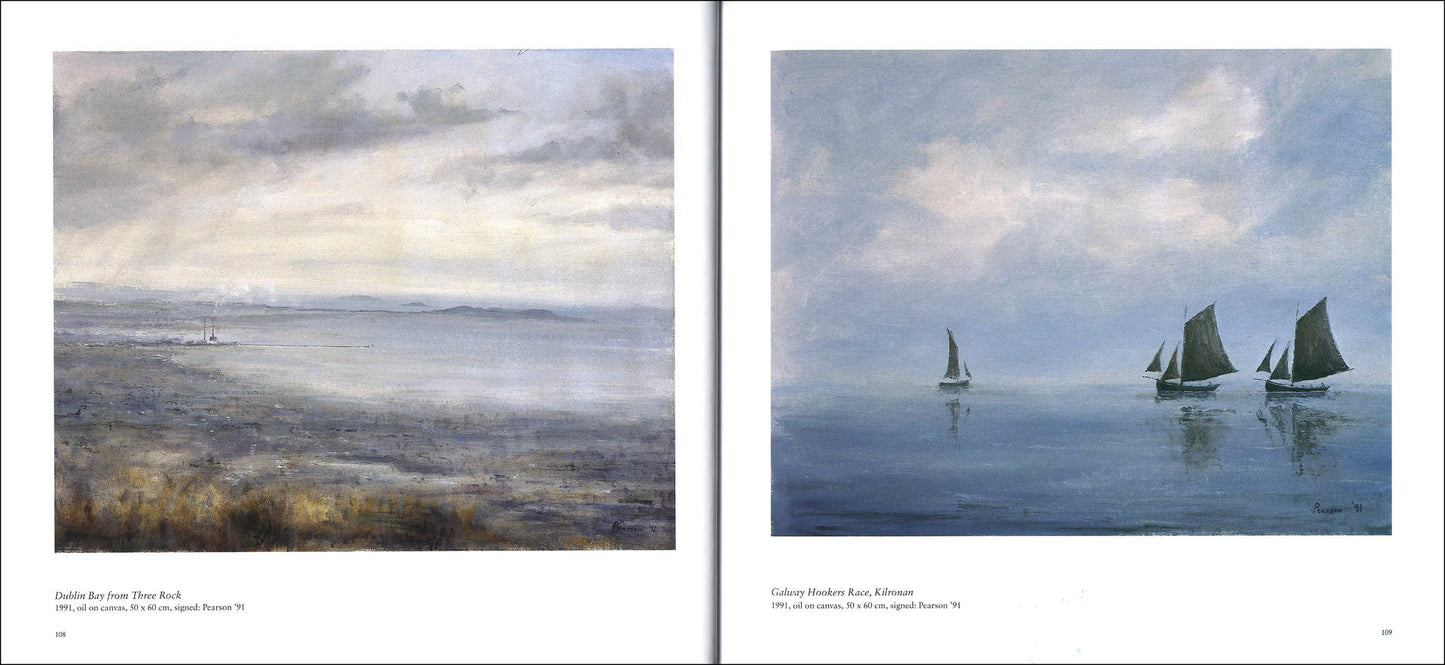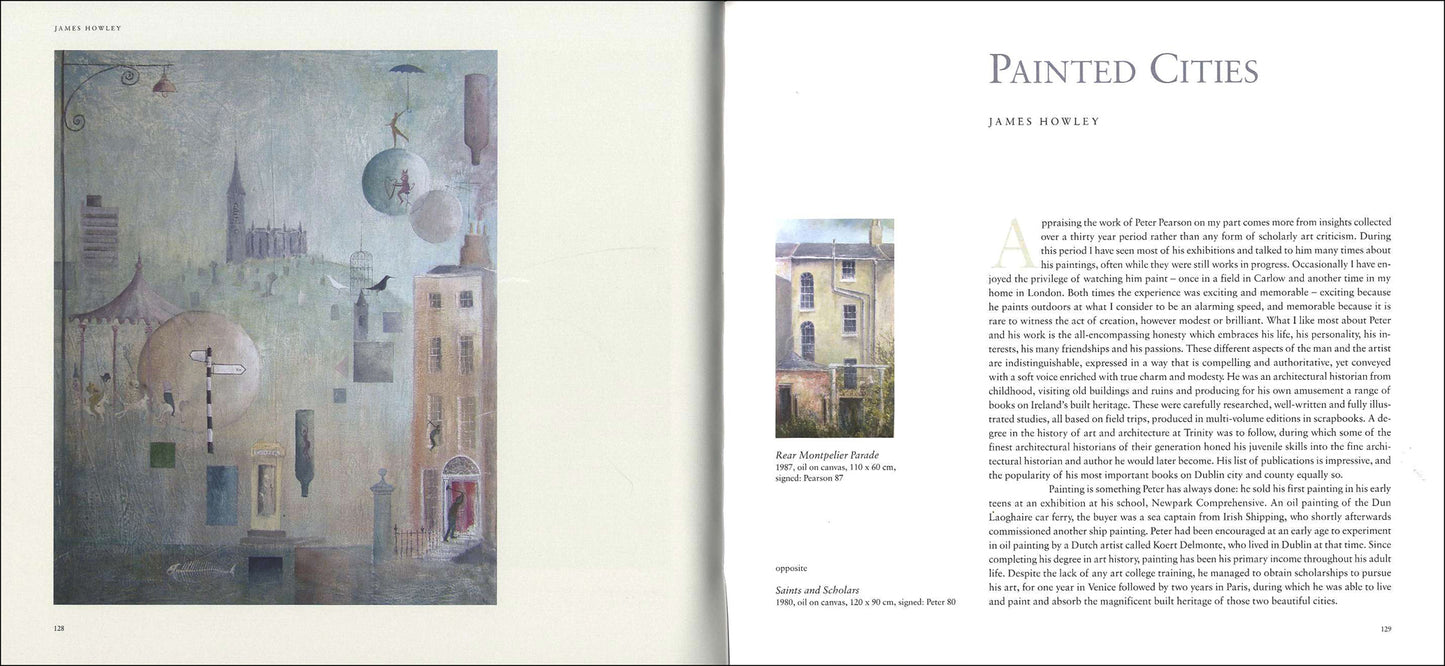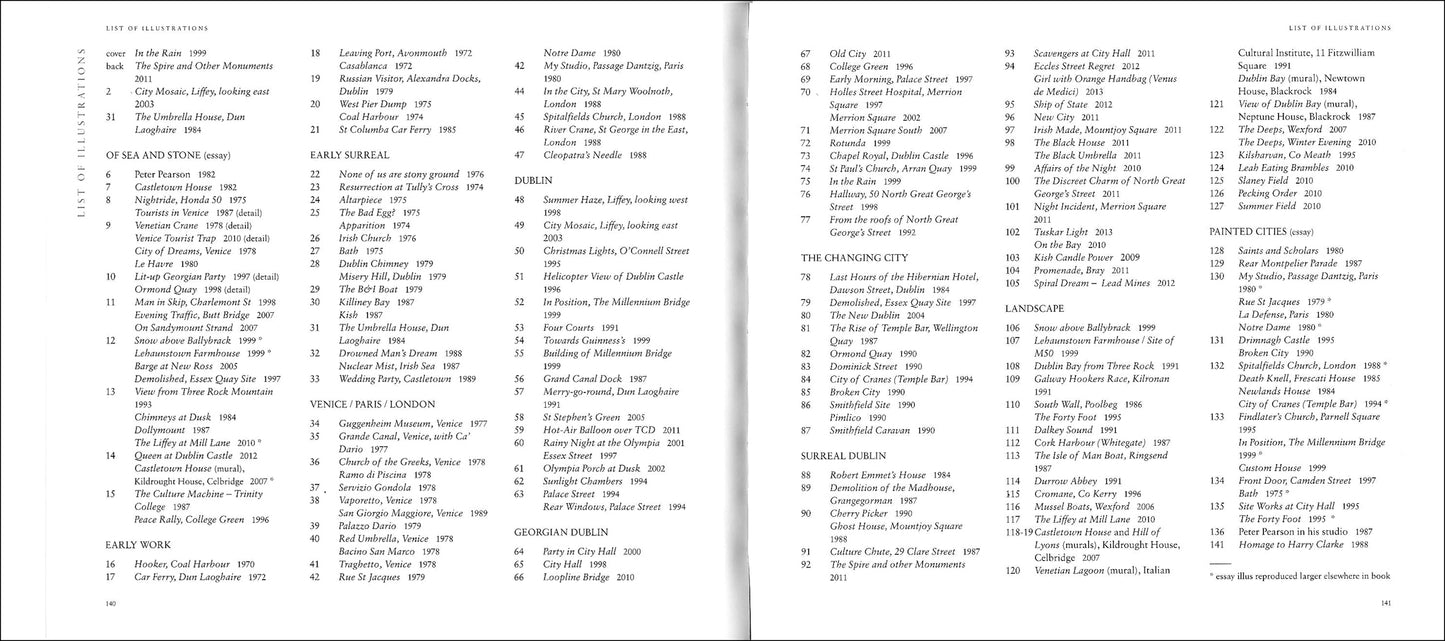Gandon
PETER PEARSON – OF SEA & STONE: Paintings 1974-2014
PETER PEARSON – OF SEA & STONE: Paintings 1974-2014
Couldn't load pickup availability
Share
essays by Peter Murray, James Howley
ISBN 978 1910140 017 144 pages (hb) 23x25cm 189 colour illus
This book is the definitive study of the work of Peter Pearson, featuring a range of illuminating essays and more than 180 paintings. Born in 1955 in Dun Laoghaire, Co Dublin, from an early age he has pursued a varied and independent career, not only as a highly regarded painter and historian, but also as a passionate advocate for the conservation of Ireland’s architectural heritage. A practising artist since his teenage years, Pearson enjoys a loyal following among a group of art collectors who appreciate his whimisical and often surreal paintings. His work is also popular with the wider public, who can readily appreciate his evocative depictions of cityscapes and coastal scenes. Some of Pearson’s paintings are quasi-abstract, some Impressionist, some Surreal. All are individual and are united by the artist’s refined tonal sense and delicate use of colour, and an aesthetic sensibility unique in contemporary Irish art.
EXTRACTS
"Pearson’s work is deceptive. At first glance it can seem simply elegiac and atmospheric, but his aesthetic sensibility is firmly rooted in the real city, with its streets and people, and not in a fictionalised rose-tinted spectacle. He depicts the russet tones of Dublin’s Georgian brick houses facing the quays in paintings such as Old City (2011), but in the same painting are two lanes of traffic toiling along the quays, with a double-decker bus crossing the bridge. This is Dublin as seen through the eyes of a Venetian colourist. It is careworn and crumbling, but as familiar as the Guidecca would have been to Tintoretto. In Pearson’s imagination, the dome of the Four Courts becomes a Pantheon, rising above a profane city. His fondness for a bird’s-eye view is also a characteristic of many paintings, such as Loopline Bridge (2010), where the dome of Gandon’s Georgian building dominates, but in the background a tall crane and the rising superstructure of the Financial Services Centre in the Docklands tells the story of city undergoing a transformation, from one building boom to another, transferring almost from the eighteenth century to the twenty-first, with not a great deal happening in between."
— from the essay by Peter Murray
"As an architect, I have learned so much from Peter about the historical importance of old buildings and the need for their preservation and reuse, both in the countryside and within urban renewal schemes. Of equal importance has been his introduction to what I often refer to as the aesthetics of age that exist in the wear and tear and rich patina that only comes with age. Before I became professionally interested in the repair of old buildings, I was conscious of Peter’s belief that historic fabric should be respected and not over-restored, which risked losing all traces of age. This approach to conservation provided a wonderful insight into what makes a building really beautiful as opposed to superficially beautiful. It is a philosophy reinforced by Peter’s long career as a collector of architectural elements and artefacts. Fragments of plaster, moulded and carved joinery, decorative cast iron, fanlights, bricks, door furniture, railing spikes, man hole covers, tiles, bottles, cans, tools – the list of the things he has collected, largely from derelict buildings, skips and dumps, is endless. These impressive collections are all about attention to detail in old buildings and places, and it is remarkable just how powerful a small example of craftsmanship can be when seen isolated and out of context. On one of Peter’s visits to stay with us in London, we visited the house of the great English architect Sir John Soane in Lincoln’s Inn Fields. Peter was like a child in a sweetshop, as he walked around the home of an eighteenth-century architectural genius, collector, theatrical showman, and very much a kindred spirit."
— from the essay by James Howley
"In the summer of 1975 I got a job in an Italian restaurant, just north of Milan, near Lake Maggiore. After two months of hard work as a waiter, I left to see Venice for the first time, arriving, of course, by train. Venice was sensational, exceeding all my expectations as I trundled across the lagoon towards this mysterious island city. I found myself in an inexpensive hotel not far from the station, the Hotel Basilea, and there had the good fortune to meet George Dix, a retired art dealer from New York, who was passionate about art and architecture, and often visited Ireland. He asked me if I would like to see inside a private Venetian palace that evening as he was going there for drinks. That evening I found my way to the glass-studded iron gate in Dorsoduro, unaware it was the home of Peggy Guggenheim. We were welcomed by this sprightly little lady and drank Campari in filigrano glasses from Murano on her terrace above the Canale Grande, overlooked by a striking bronze horseman by Marino Marini. When I returned to live in Venice in 1977, to study painting, I was invited to her house a couple of times. The dining room, in the middle of her stylishly modern, single-storey palace, was decked out with paintings by Braque, Picasso, Ernst and Dali. In 1978, some months into my painting scholarship, William and Cristina Marinello of the Galleria d’Arte Veniexia, in Campiello S Tomà, agreed to hold an exhibition of my work, which consisted of watercolours and wall-hangings. Previously I had worked on a fairly small scale, on paper and board, but my time on the Guidecca in Venice allowed me to paint on a much larger scale in oil on linen. The gallery was well located on the main route from Rialto to the Accademia, so many visitors passed by. An interesting group of artists showed there, Italians and foreigners, painters and mosaic artists, and their work always looked very striking on the black walls of the gallery."
— from the essay by Peter Pearson
|
CONTENTS Of Sea and Stone by Peter Murray 6 PAINTINGS Early Work 16 Painted Cities by James Howley 132 |
